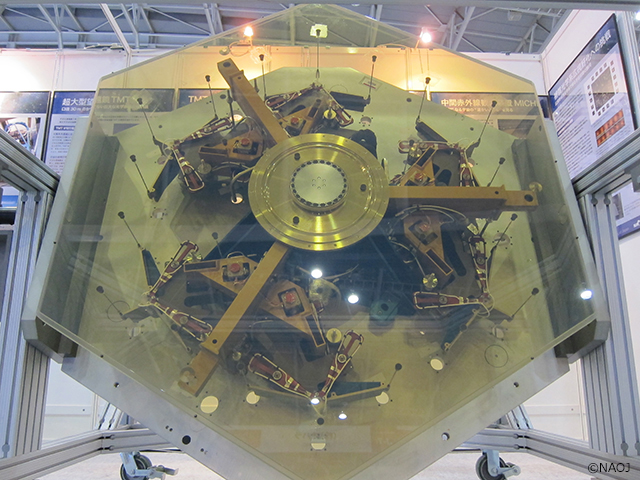Japan Signals Its Commitment to the Thirty Meter Telescope (TMT) Project
| Topics
Japan has reached an important milestone for the construction of the Thirty Meter Telescope (TMT).
TMT is a collaboration between 5 international partners to construct an extremely large 30 meter telescope for visible and infrared light observation on Mauna Kea (note 1, illus. 1). 1,244 million yen (approximately $12.2 million U.S.) of the current fiscal year budget has been allotted to fund a portion of the expenses for the preparation and construction of TMT.
“We welcome the support of the Japanese government as demonstrated in the 2013 annual budget,” said Masahiko Hayashi, the Director General of NAOJ. “With these funds, the TMT project will make important strides this fiscal year toward one day becoming the most advanced and powerful optical telescope on Earth.”
Along with the recent funding allotments, TMT has been newly added to the list of major projects promoted by Japan’s Ministry of Education, Culture, Sports, Science and Technology (MEXT) through its Promotion of Large Scientific Research Projects. There are 8 projects in this special budget category including the Super-Kamiokande neutrino observatory in Japan, the Atacama Large Millimeter/submillimeter Array (ALMA) in Chile, and the Subaru Telescope, which like TMT is also in Hawaii.
“The Japanese government’s endorsement of the TMT project is an important step in the construction of TMT, providing the necessary funding for key elements of the telescope,” said Edward Stone, the Morrisroe Professor of Physics at the California Institute of Technology (Caltech) and vice chair of the TMT board.
TMT is a segmented mirror telescope comprised of 492 mirror segments that combine to form the 30 meter primary mirror. This fiscal year, the institution leading the project for Japan, NAOJ will initiate the manufacturing of the telescope primary mirror, including the mass production and surface polishing of the segmented mirror blanks based on the development and trial manufacture performed to date (illus. 2).
Additionally, the development and verification of the key technology and the detailed design of the telescope system which Japan is expected to provide as its share of the contribution to the project are underway.
In April 2013, the State of Hawaii issued a permit for the construction of TMT enabling the commencement of geotechnical studies at the construction site (note 2). Accordingly, NAOJ will continue to proceed in its effort for the timely construction of the telescope.


Note 1: TMT project
The Thirty Meter Telescope project is a plan to build a 30 meter telescope for visible and infrared light observation on the summit of Mauna Kea in the State of Hawaii. The project is a collaboration between five countries including Japan, the Unites States, Canada, China and India, and is projected to initiate full-scale construction of the TMT Observatory in fiscal year 2014 with the goal of starting observations in 2022. The telescope, once constructed, will endeavor to explore Earth-like extrasolar planets for evidence of life as well as to solve the mysteries of galaxy formation during the early universe.
Multiple countries will contribute to the construction of the 492 segmented mirrors. For its share of the contribution, Japan is expected to manufacture the main telescope structure and the mirror blanks for the segmented primary mirror, provide a portion of the polishing of the segmented mirrors, and provide a portion of the instrumentation – a combined total equivalent to one-fourth of the total cost (US$1500 million est.) of TMT construction.
Note 2:
In April 2013, the Hawaiian Board of Land and Natural Resources issued a permit for the construction of TMT in response to the application filed by University of Hawaii for the Conservation District Use Permit. (Details are available in tmt.org)